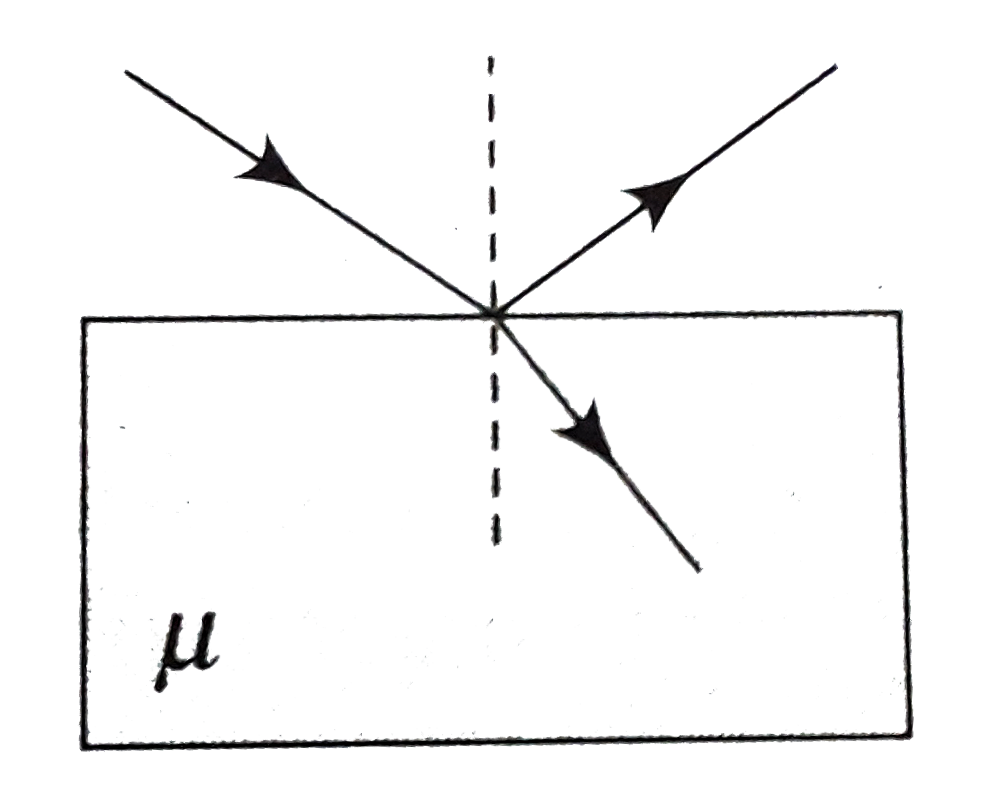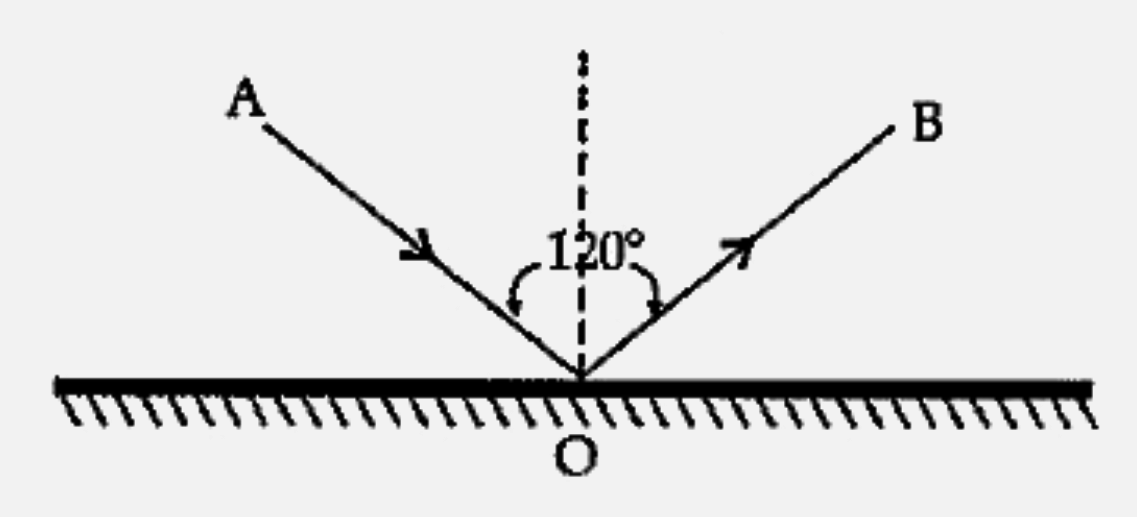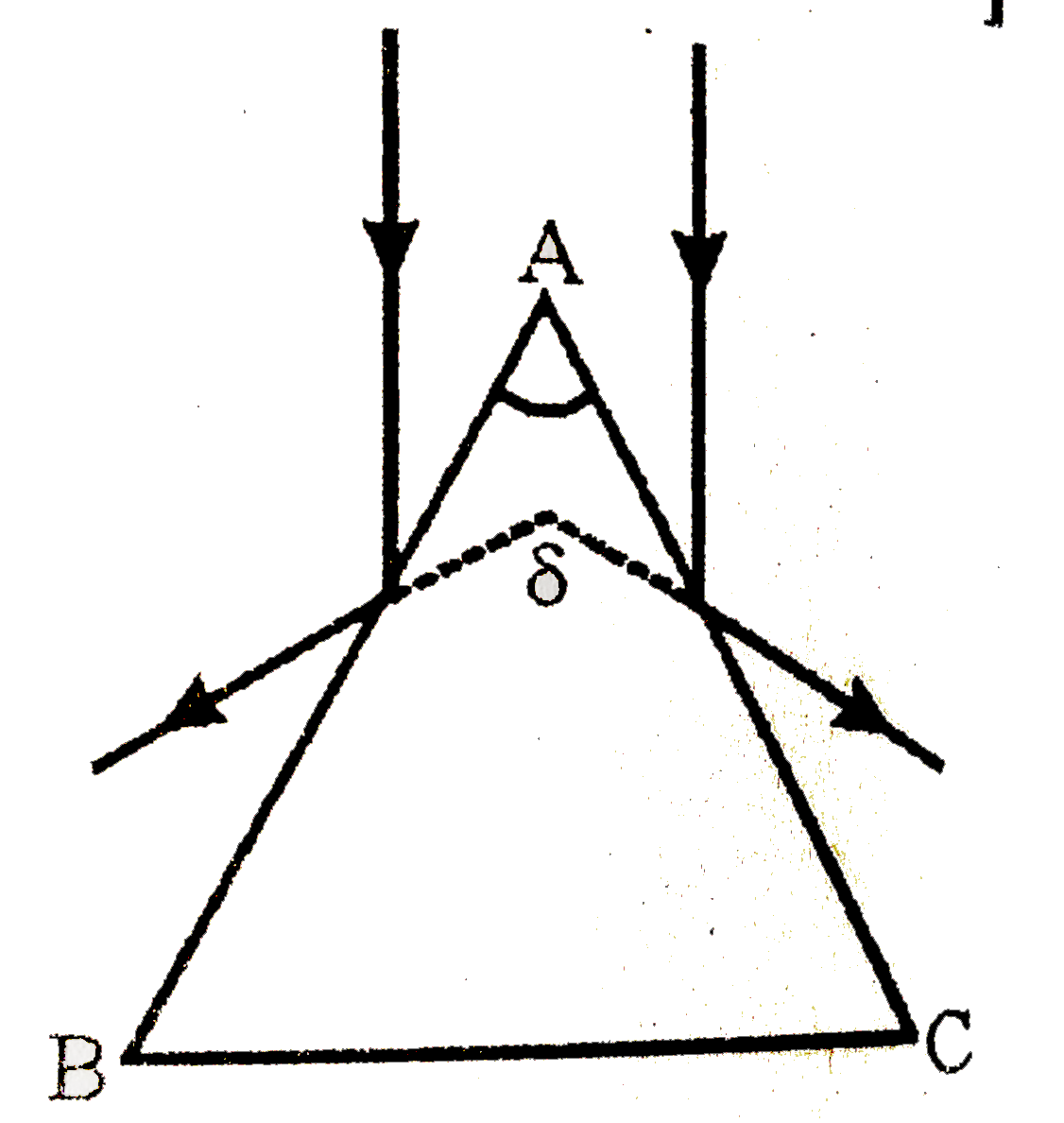Statement I: A beam of light rays has been reflected from a rough surface.
Statement II: Amplitude of incident and reflected rays would be different.
Statement is True, Statement II is True, Statement II is correct explanation for Statement I
Statement I is True, Statement II is True, Statement II is NOT a correct explanation for Statement I.
Statement I is True, Statement II is False.
Statement I is False, Statement II is True.
The correct Answer is:b.
Reflection of light rays takes place on rough as well as smooth dsurface. Some light energy would be absorbed by rough surface, so amplitude of reflected ray is less than that of incident ray.
Topper's Solved these Questions
- GEOMETRICAL OPTICSBOOK - CENGAGE PHYSICSCHAPTER - GEOMETRICAL OPTICSEXERCISE - Assertion-Reasoninig
2 Videos
- GEOMETRICAL OPTICSBOOK - CENGAGE PHYSICSCHAPTER - GEOMETRICAL OPTICSEXERCISE - Linked Comprehension
51 Videos
- GEOMETRICAL OPTICSBOOK - CENGAGE PHYSICSCHAPTER - GEOMETRICAL OPTICSEXERCISE - Subjective
26 Videos
- FRICTIONBOOK - CENGAGE PHYSICSCHAPTER - FRICTIONEXERCISE - QUESTION BANK
1 Videos
- GRAVITATIONBOOK - CENGAGE PHYSICSCHAPTER - GRAVITATIONEXERCISE - Question Bank
39 Videos
Similar Questions
Ligtht falls on a plane reflecting surface.For what angler of incidence is the reflected ray normal to the incident ray.
View SolutionStatement I: A light ray is incident on a glass slab. Some portion of it is reflected and some is refracted. Refracted and reflected rays are always perpendicular to each other.
Statement II: Angle of incidence is equal to angle of reflection.

View Solution
Knowledge Check
Phase difference between incident and reflected rays is 180∘ in
Aair from glassBwater from glassCglass from diamondDglass from airThe phase difference between incident ray and reflected ray of light is
A90∘B120∘C150∘D180∘Ligtht falls on a plane reflecting surface.For what angler of incidence is the reflected ray normal to the incident ray.
A60∘B45∘C90∘D30∘
The diagram below shows a light ray striking and reflecting from a plane mirror AO is the incident ray and OB the reflected ray. The angle between the incident ray and the reflected ray is 120∘.

What is the value of the angle of reflection?
View SolutionA beam of light is partially reflected and partially refracted from a surface. The angle between reflected and refracted light ray is 90∘. If the angle of refraction is 30∘, the angle of incidence is
View SolutionStatement I: A lighr ray is incident on a glass slab. Some portion of it is reflected and some is refracted. Reeefracted and reflected rays are always perpendicular to each other.
Statement II: Angle of incidence is equal to angle of reflection.

View SolutionA beam of light is partially reflected and partially refracted from a surface. The angle between reflected and refracted light ray is 90∘. If the angle of refraction is 30∘, the angle of incidence is
View Solution
A parallel beam of light is incident on a prism as shown in figure. Such that the rays get reflected from opposite faces. The angle of deviation δ between reflected rays from faces AB and AC is-
View Solution
